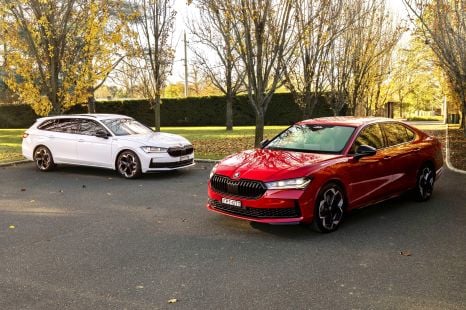

Max Davies
2025 Skoda Superb Sportline review
2 Months Ago
The new MG 3 is safer and smarter than the last, but the price has been pushed to a new level – is it good enough to justify the cost?
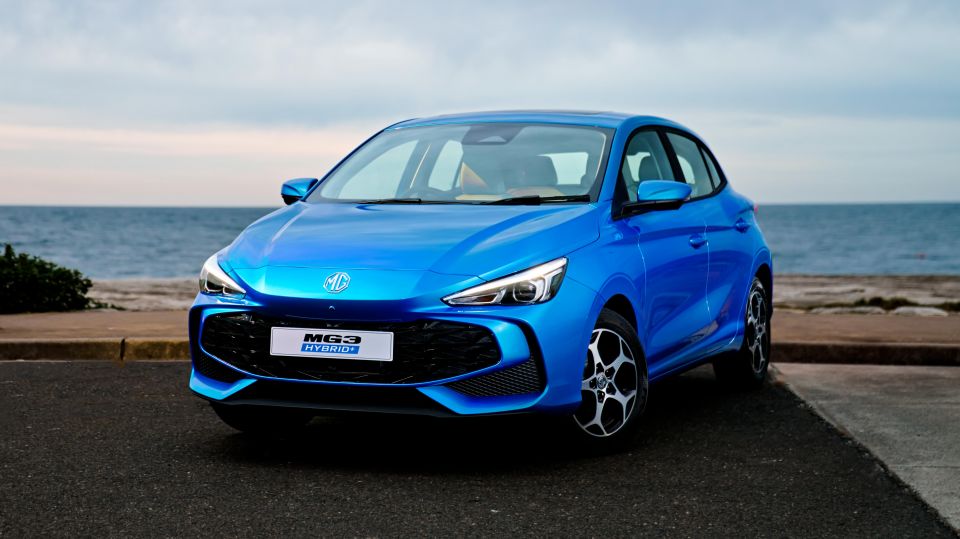


Quickly see how this car stacks up against its competition. Select any benchmark to see more details.
Where expert car reviews meet expert car buying – CarExpert gives you trusted advice, personalised service and real savings on your next new car.
Until recently, the MG 3 was a top-selling cheap-but-not-so-cheerful car.

But the new-generation MG 3 is way better than the last one, with a more sophisticated design inside and out, more tech and – finally – the safety gear you’d expect in a city car in 2024.
There’s also a new petrol-electric hybrid as tested here, which offers ample power and impressive real-world efficiency.
So, is the MG 3 finally cheap and cheerful? Read on to find out.
There are four versions of the new MG 3 on sale in Australia, and we’re testing the top-spec Hybrid+ Essence here.
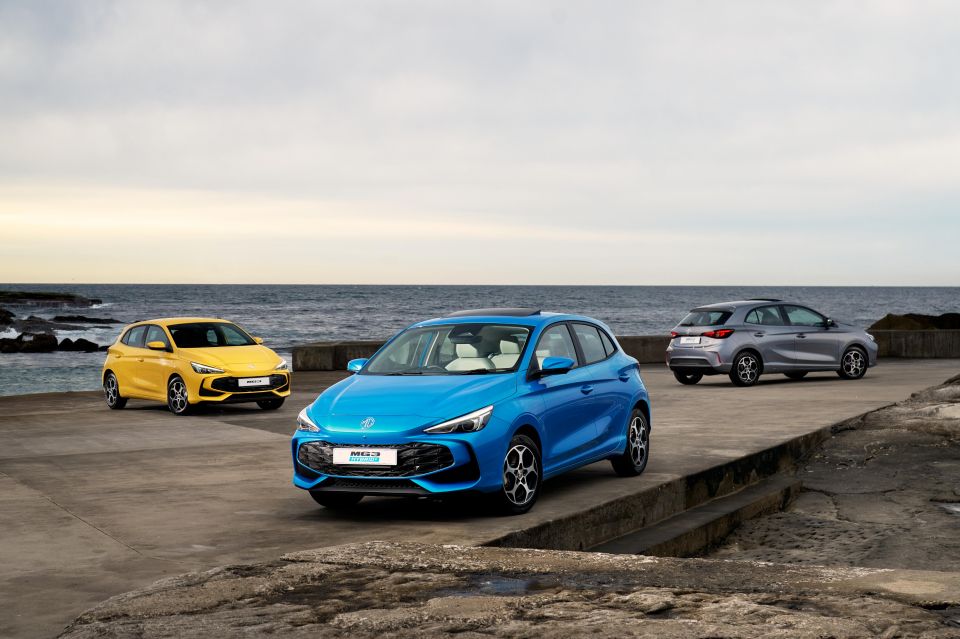
| Model | $RRP |
|---|---|
| 2024 MG 3 Excite | $23,990 |
| 2024 MG 3 Essence | $25,990 |
| 2024 MG 3 Hybrid+ Excite | $27,990 |
| 2024 MG 3 Hybrid+ Essence | $29,990 |
Prices exclude on-road costs.
To see how the MG 3 lines up against the competition, check out our comparison tool.
Buy your new car without the stress. It's fast, simple and completely free.

Great service from Travis and team, second time I have used this business would not hesitate to recommend them to anyone
Craig C.
Purchased a Ford Ranger in Sunshine Coast, QLD
CarExpert helped Craig save $7,224 on his Ford Ranger, now let us save you on your next new car.
Get your BEST priceWhat a massive improvement to the interior. The changes made here have taken the new-gen MG 3 into a new realm.

It looks smart, with the twin digital screens – a 10.25-inch unit for multimedia, and a 7.0-inch screen for the driver info display – upping the wow factor compared with the last version.
The infotainment screen is similar to that used in the bigger MG 4, and like that car it has an array of buttons below the display for some quick controls.
There are volume up/down controls, a home key, A/C on/off, front and rear demister buttons, and a fan-speed button – but no temperature toggle or fan toggle, as you still need to make those incremental adjustments through the screen (or using shortcuts on the steering wheel).
The display has an array of menus that will take some learning, including the MG Pilot advanced safety tech that you might wish to disable each time you drive, if you’re like me. More on that in the driving section.


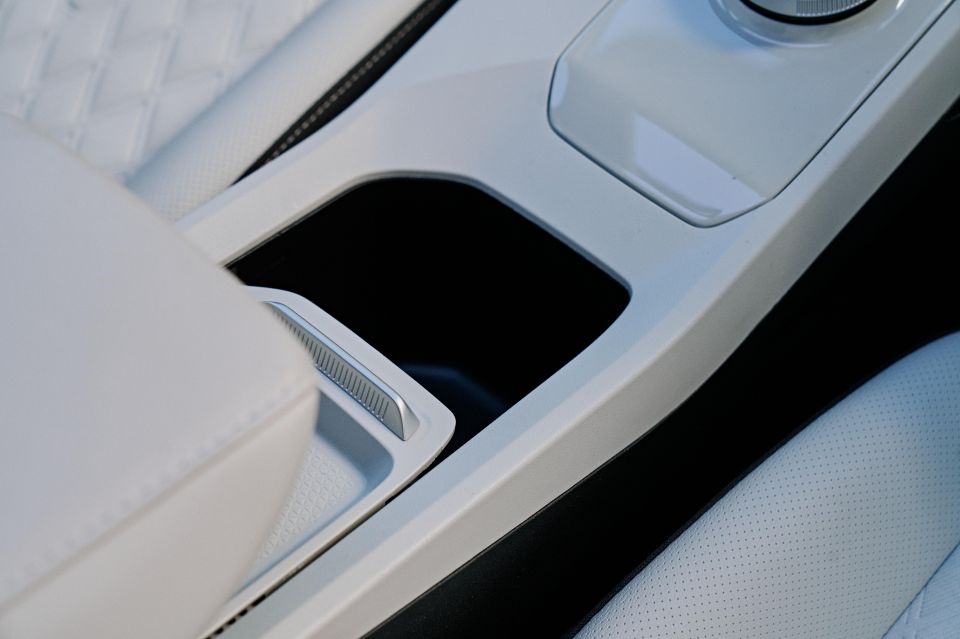

There is Apple CarPlay and Android Auto smartphone mirroring, but you need to connect via cable – no wireless here, sadly, and there’s also no wireless phone charger which is another disappointing omission.
At least there is an in-built sat nav for all those older buyers who don’t use smartphone tech. But for younger buyers, no wireless mirroring and charging could be an ick.
The steering wheel, similar to that used in the MG 4, feels too big for the size of the car, making it feel like more of a handful in parking moves. And the controls on the steering wheel – finished in fingerprint-attracting piano black – are tricky.
The steering wheel icon, for instance, is the cruise control button, and you need to hit the little ‘pages’ icon on the right side to dive into the driver info screen using the arrow trigger, otherwise you’ll be skipping songs or turning up/down the volume.

The control quibbles aside there is plenty of space here, with a pair of cupholders in front of the dial shifter, and a sliding tray that hides another spot for loose items between the front seats. There’s a comfy centre armrest and bottle holders in the doors as well.
The seats themselves? They offer good comfort, decent adjustability for people of different shapes and sizes, and there’s also tilt adjustment for the steering.
And the finish – a mix of fake leather and cloth – is pretty nice, as is the vinyl trimming on the dashboard. I like there’s a hark-back moment with the cross-hatch finish resembling the old car, too.
The high-grade Essence model also comes with a sunroof – one of those little tiny ones, not a full-glass roof.

There’s no auto-dimming rearview mirror, but there is a USB-A port up in the mirror housing for a dash cam. That’s in addition to USB-A and USB-C ports below the screen for charging and connectivity.
Back seat space is exceptional for a car of this size. At 182cm/six-foot I was able to slide in behind my own driving position with knee and toe room to space, and headroom is also good – just be mindful if you’re taller, the door openings might be your biggest encumbrance.
You could possibly fit three small adults across, but three child seats might be too ambitious. However, I managed to fit my daughter’s child seat in with enough room for her to swing her legs, and for someone to sit in front and not feel squished.
There are ISOFIX points in the window seats and top-tethers for all three rear seats, too, and – in a boon for backseat riders – there are directional air-vents, and a single USB-A port for charging devices.
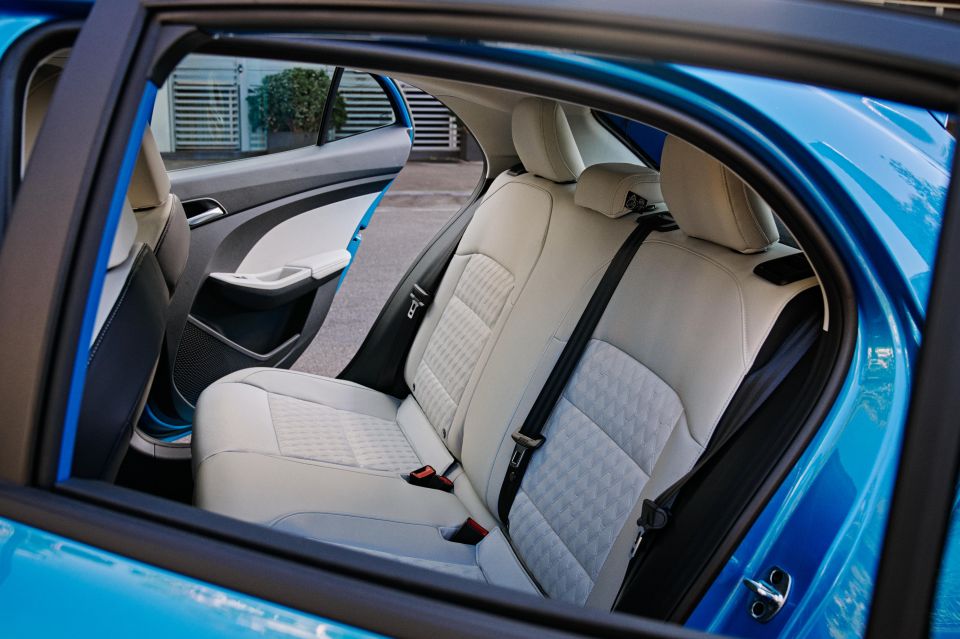

There are map pockets and bottle holders in the doors, but no centre armrest.
Boot space is improved over the previous model, with MG claiming a cargo capacity of 293 litres with the seats up.
It’s certainly a decent size given the compact dimensions of the car, and it has a light and shopping bag hook to keep things in check.
But take note that there is no spare wheel offered in the hybrid model, due to the placement of the hybrid battery pack – under the floor is just a tyre repair kit. If you buy the petrol MG 3, you get a space-saver spare.
The MG 3 Hybrid+ has a 1.5-litre four-cylinder petrol engine running the Atkinson cycle, with outputs of 75kW and 128Nm.

That might seem modest, but when you add the 100kW electric motor and 1.83kWh battery pack working with a three-speed automatic transmission and front-wheel drive, it all culminates for a combined maximum output of 155kW.
Yes, that is more than the current-gen Volkswagen Polo GTI (147kW). While it is a sprightly thing, the 0-100km/h claim is 8.0 seconds, so don’t go expecting hot-hatch performance.
It isn’t all that heavy, either – the Hybrid+ Essence is 1308kg, just 110kg more than the petrol – and all versions can tow up to 500kg.
As you’d expect, official combined cycle fuel consumption is impressive, at 4.3 litres per 100km (100g/km CO2). On test I saw an indicated return of 4.8L/100km across a mix of urban and highway driving.
Keep in mind, however, that the Hybrid+ models need 95 RON premium unleaded, and the fuel tank is just 36 litres in capacity.
A huge improvement compared to the last MG 3? You bet.

It drives more akin to a Corolla Hybrid than Yaris Hybrid, despite playing at the same price point as the latter. This is a more refined car than a Yaris, which has a far raspier drive experience courtesy of its three-cylinder engine.
This car is smooth in its behaviour, and it has a level of refinement that’s surprising in context of the previous model, and very much in line with what we’ve seen from the likes of the larger MG 4.
It’s zippy; eager in its responses and it actually hustles along if you’re in a hurry. And it does all of that without much fuss.
The way it will move between EV mode and HEV (hybrid) is almost imperceptible, as is the three-speed auto transmission, which is barely noticeable in general driving.

There are three drive modes to choose from – Eco, Standard and Sport – but there is no way to choose “EV” as a mode, as is the case with some other hybrids.
Not really a big deal because the car’s systems figure out whether EV or HEV is the best for the situation, and I noticed the powertrain dipping in and out of those in a mix of driving. What I didn’t notice was the engine kicking in or out, because it’s really smooth in the way it operates.
There is a regenerative braking system to help feed potentially lost energy back in to the battery pack, and three different levels of regen braking.
For some reason it kept defaulting back to the middle setting (2) but I preferred the feel of level 3, the most intense. It doesn’t go as far as a ‘single pedal’ feel, but it will arrest momentum in a trustworthy and learnable way.

It’s also a mature and confident drive, too, with a fairly surefooted feel on the road only occasionally being upset by sharp edges, which can be felt more at the front axle than the rear.
Even so, the general ride compliance is great, and the comfort is good, too. It doesn’t handle like a hot hatch, so don’t expect that, but it is competent at changing directions and feels pretty balanced in the act.
The steering offers a bit of the artificial resistance you expect of an electric system, but it’s easy to park and has an honest responsiveness at a mix of speeds.
My biggest issue with the steering is the size of the wheel, which is too large for a car of these dimensions in my opinion.

I was really impressed with much of the drive experience in this car – aside from the beeping and bonging ‘assistance’ tech, including the “Intelligent Speed Assist” that reads speed signs and warns you if you’re driving over the limit.
My area has many speed limit changes, and it got on my nerves pretty quickly.
The other complaint I had was a bit of excess noise at highway speeds, but that’s likely exacerbated by the hushed powertrain which is far quieter than many rivals in the class.
However, those small concerns can’t detract from the fact that this is a vastly improved small car compared to its predecessor, and well and truly competitive for liveability.
The MG 3 range is split into base-model Excite and top-spec Essence grades, with a few minor differences between the petrol and hybrid versions.
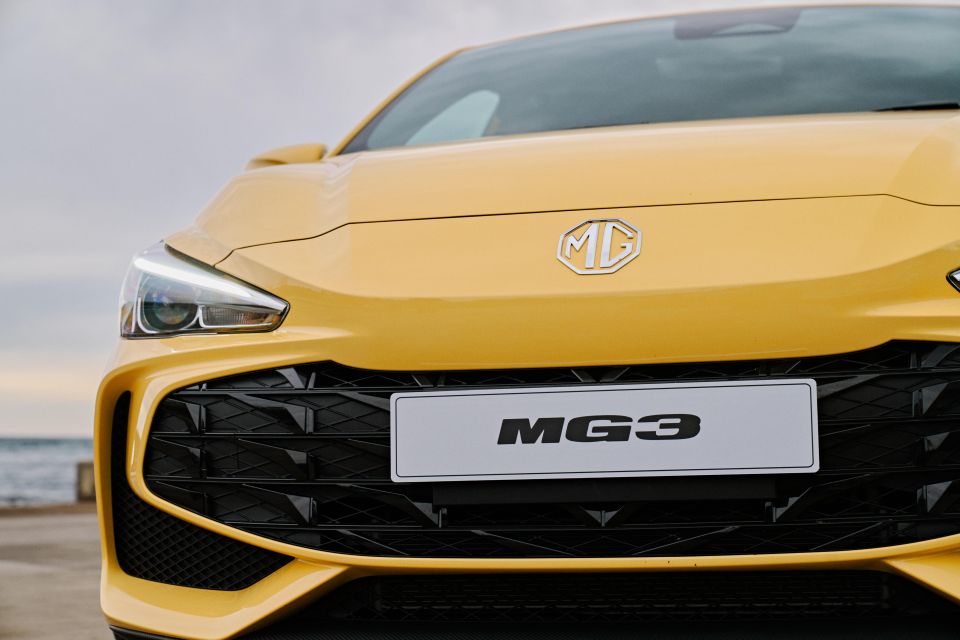


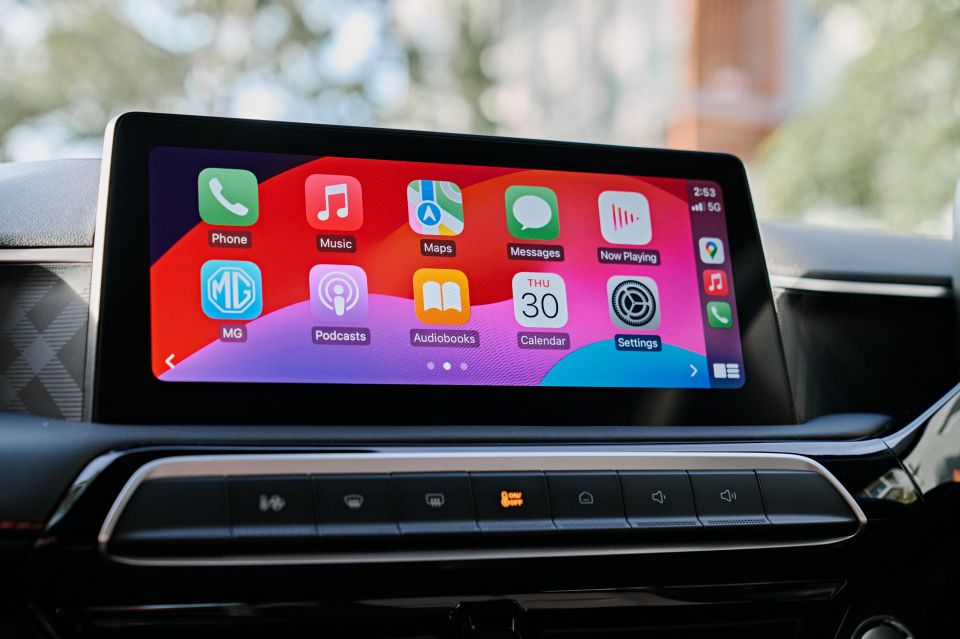
Where expert car reviews meet expert car buying – CarExpert gives you trusted advice, personalised service and real savings on your next new car.
MG 3 Excite standard equipment:
MG 3 Hybrid+ adds:
MG 3 Essence adds (over Excite):
The last MG 3 was not a posterchild for safety tech – it wasn’t even a thumbtack in the poster, in fact.

But this one is comprehensively equipped with an array of advanced safety features. At the time of publication the compact car still hasn’t received a Euro NCAP or ANCAP rating.
Despite that, here’s a list of the standard safety tech across all grades:
Essence models add:
Hybrid models add:
MG Australia offers a seven-year, unlimited-kilometre warranty for its model range, including the new MG 3.
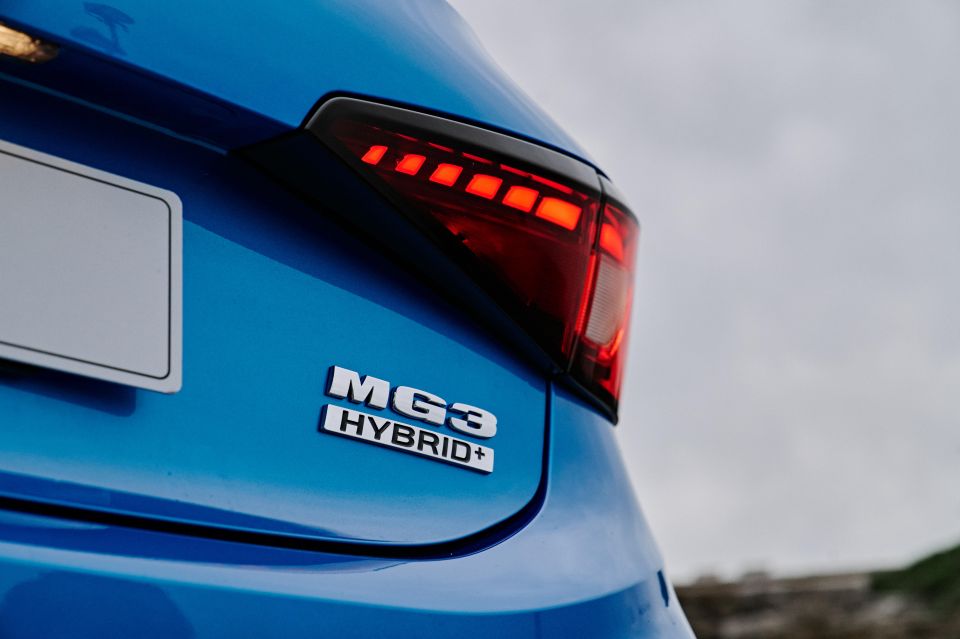
Hybrid models have a seven-year, unlimited-kilometre warranty for the high-voltage battery system as well, but you need to read the fine print if you plan to drive this vehicle for commercial use. All versions get a seven-year roadside assistance plan included.
The brand has a capped-price servicing plan on offer for seven years, too. Service intervals are 12 months or 10,000km – whichever comes first.
2024 MG 3 service pricing:
| Service Interval | MG 3 | MG 3 Hybrid+ |
|---|---|---|
| 1 year, 10,000km | $234 | $235 |
| 2 years, 20,000km | $323 | $349 |
| 3 years, 30,000km | $352 | $341 |
| 4 years, 40,000km | $536 | $628 |
| 5 years, 50,000km | $409 | $492 |
Buy your new car without the stress. It's fast, simple and completely free.

Great service from Travis and team, second time I have used this business would not hesitate to recommend them to anyone
Craig C.
Purchased a Ford Ranger in Sunshine Coast, QLD
CarExpert helped Craig save $7,224 on his Ford Ranger, now let us save you on your next new car.
Get your BEST priceThe improvements here are clear.

The new MG 3 is vastly better than its predecessor, with a more loveable cabin, greater levels of safety technology, and a hybrid powertrain that makes it a very urban- or commuter-friendly choice for a number of different buyers.
Cheap and cheerful? You bet – but it’s also compelling and competitive for this class, too.
Click the images for the full gallery
MORE: Buy an MG 3 MORE: Everything MG 3
Where expert car reviews meet expert car buying – CarExpert gives you trusted advice, personalised service and real savings on your next new car.
Matt has more than a decade of experience in automotive journalism, and loves exploring the pros and cons of new cars, delving into deep-dive industry stories, and going for a drive just for the fun of it.


Max Davies
2 Months Ago
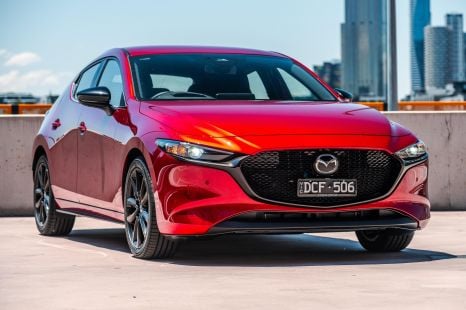

Josh Nevett
2 Months Ago
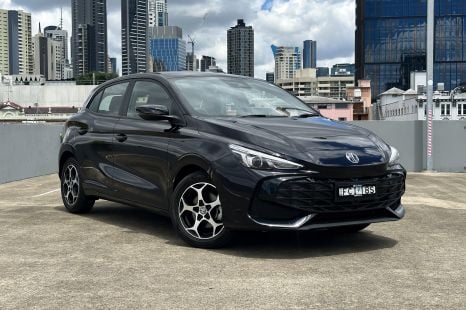

William Stopford
2 Months Ago


Josh Nevett
2 Months Ago


Josh Nevett
2 Months Ago


Matt Campbell
1 Month Ago